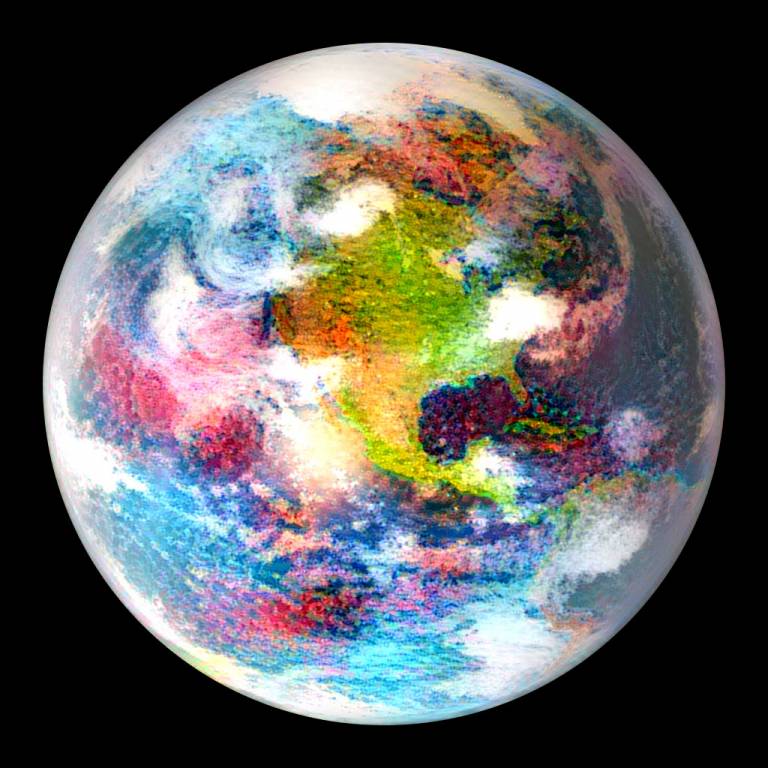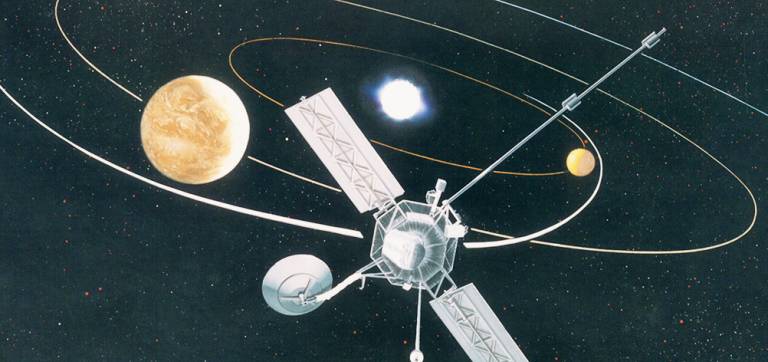Meet RobERt, the dreaming detective for exoplanet atmospheres
28 June 2016

Machine-learning techniques that mimic human recognition and dreaming processes are being deployed in the search for habitable worlds beyond our solar system. A deep belief neural network, called RobERt (Robotic Exoplanet Recognition), has been developed by astronomers at UCL to sift through detections of light emanating from distant planetary systems and retrieve spectral information about the gases present in the exoplanet atmospheres. RobERt will be presented at the National Astronomy Meeting (NAM) 2016 in Nottingham by Dr Ingo Waldmann on Tuesday 28th June.
"Different
types of molecules absorb and emit light at specific wavelengths,
embedding a unique pattern of lines within the electromagnetic
spectrum," explained Dr Waldmann, who leads RobERt's development team.
"We can take light that has been filtered through an exoplanet's
atmosphere or reflected from its cloud-tops, split it like a rainbow and
then pick out the 'fingerprint' of features associated with the
different molecules or gases. Human brains are really good at finding
these patterns in spectra and label them from experience, but it's a
really time consuming job and there will be huge amounts of data.
We built RobERt to independently learn from examples and to build on his own experiences.
This
way, like a seasoned astronomer or a detective, RobERt has a pretty
good feeling for what molecules are inside a spectrum and which are the
most promising data for more detailed analysis. But what takes days or
weeks usually takes RobERt mere seconds. "
Deep belief neural
networks, or DBNs, were developed more than a decade ago and are
commonly used for speech recognition, Internet searches and tracking
customer behaviour. RobERt's DBN has three layers of unit processors, or
'neurons'. Information is fed into a bottom layer of 500 neurons, which
make an initial filter of the data and pass a subset up to the second
layer. Here, 200 neurons refine the selection and pass data up to a
third layer of 50 neurons to make the final identification of the gases
most likely to be present.
To prepare RobERt for his challenge,
Waldmann and colleagues at UCL created a total of 85,750 simulated
spectra, covering five different types of exoplanet ranging from
GJ1214b, a potential "ocean planet", to WASP-12, a hot Jupiter orbiting
very close to its star. Each spectrum in the training set contained the
fingerprint of a single gas species. RobERt's learning progress was
tested at intervals during the training with 'control' spectra. At the
end of the training phase, RobERt had a recognition accuracy of 99.7%.
"RobERt
has learned to take into account factors such as noise, restricted
wavelength ranges and mixtures of gases," said Waldmann. "He can pick
out components such as water and methane in a mixed atmosphere with a
high probability, even when the input comes from the limited wavebands
that most space instruments provide and when it contains overlapping
features."
RobERt's DBN can also be reversed so that instead of
analysing data fed into the system, he can enter a 'dreaming state' in
which he can generate full spectra based on his experiences.
"Robots
really do dream. We can ask RobERt to dream up what he thinks a water
spectrum will look like, and he's proved very accurate," said Waldmann.
"This dreaming ability has been very useful when trying to identify
features in incomplete data. RobERt can use his dream state to fill in
the gaps. The James Webb Space Telescope, due for launch in 2018, will
tell as more about the atmospheres of exoplanets, and new facilities
like Twinkle or ARIEL will be coming online over the next decade that
are specifically tailored to characterising the atmospheres of
exoplanets. The amount of data these missions will provide will be
breath taking. RobERt will play an invaluable role in helping us to
analyse data from these missions and find out what these distant worlds
are really like."
 Close
Close




